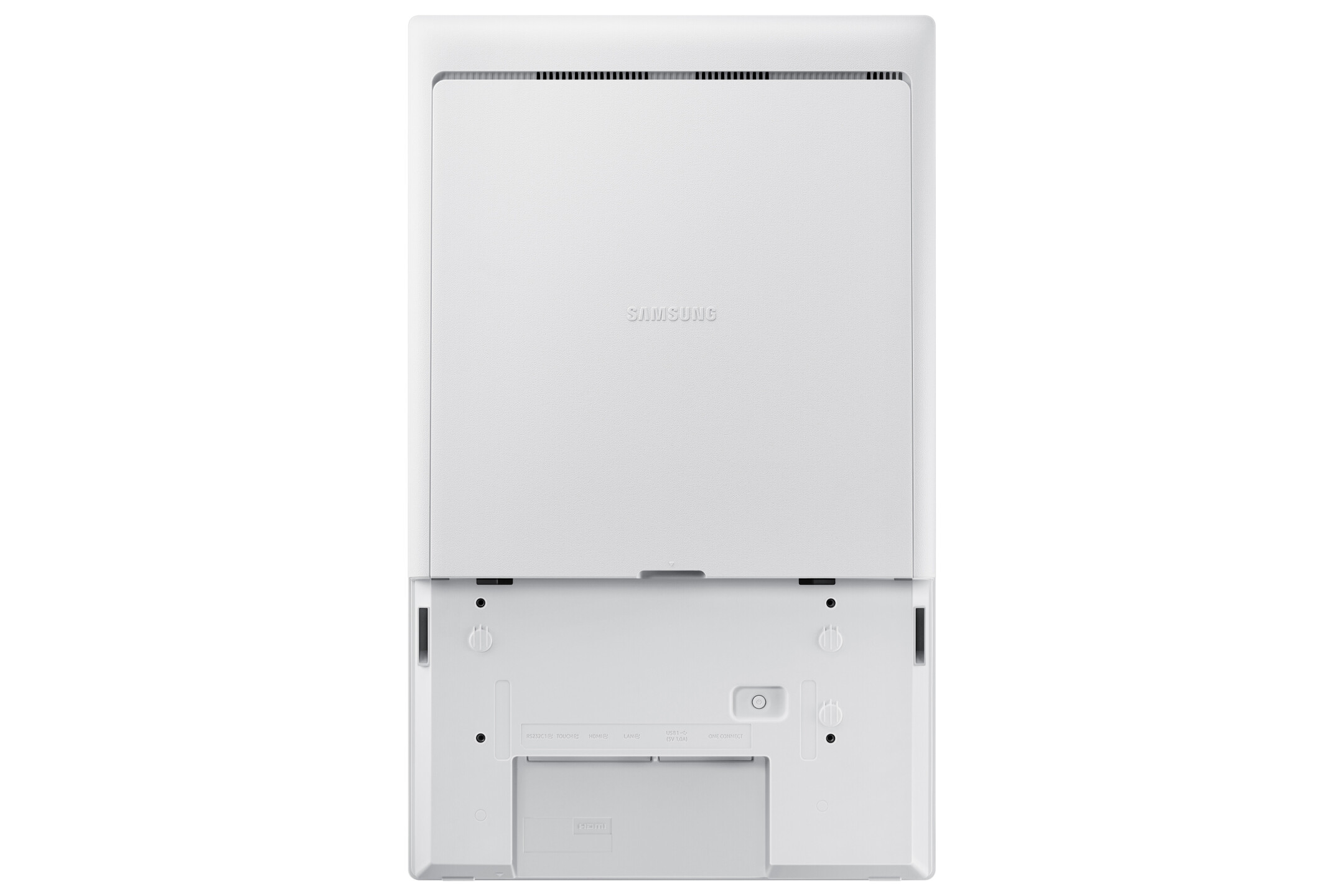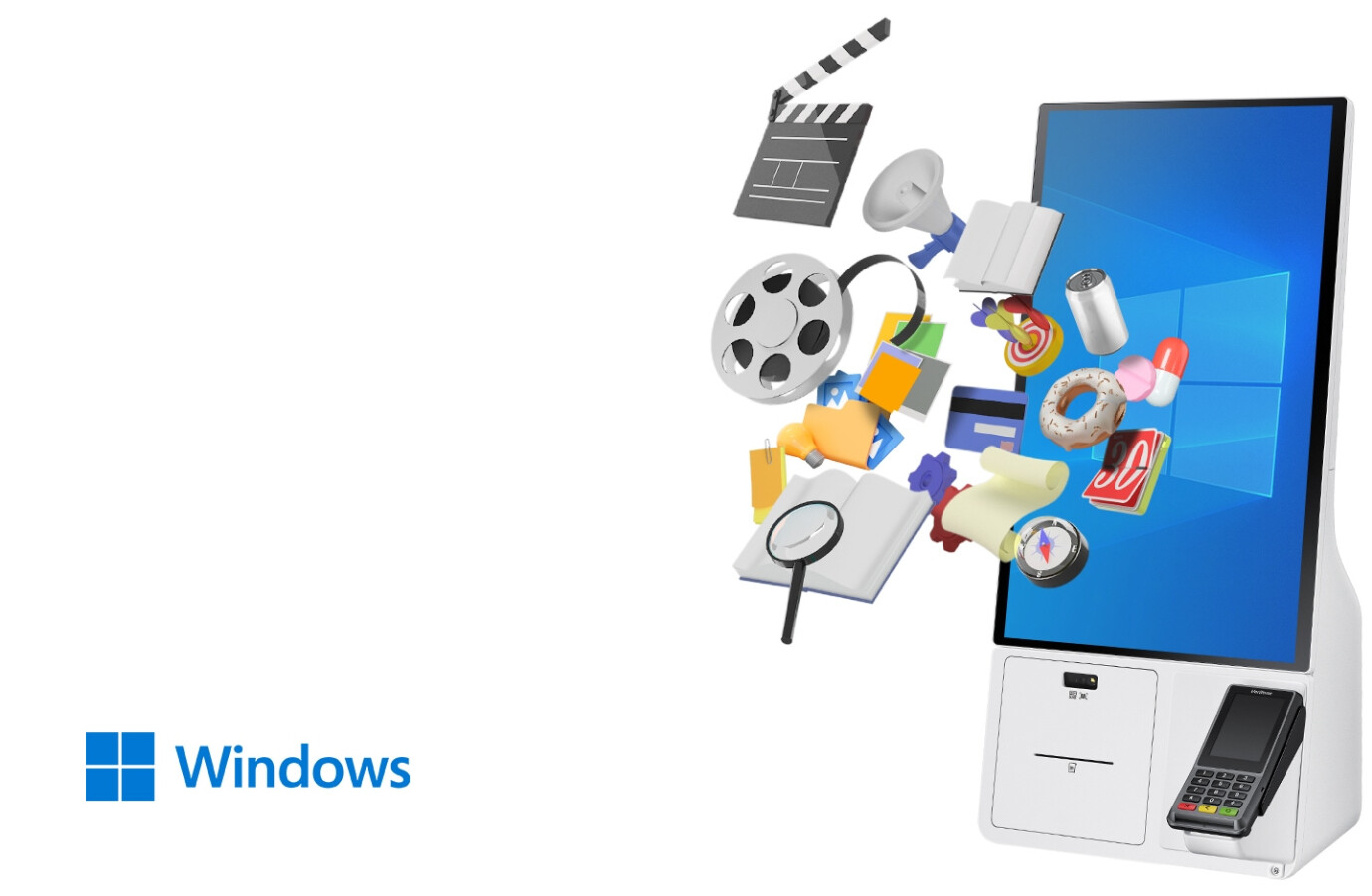



















£1,319.46*
- Resolution 1920 x 1080 Full HD
- Max. Brightness 250 cd/m²
- Contrast Ratio 1,000 :1
- Aspect Ratio 9:16


Product information
Samsung Kiosk KM24C-C (24")
- Kiosk terminal with interactive touch functionality
- Operating system: Windows™ 10 IoT Enterprise LTSC
- CPU: Intel® Celeron® 6305E (1.8GHz Dual-Core)
- Compact and modern design
- Integrated payment receipt printer
- Antibacterial PEF film
- Samsung Connector Box CY-KM24APXEN is a necessary component for the operation of the kiosk display
Entwickelt für Unternehmen

Samsung's latest technology offers a modern standard for interactive displays with space-saving design, advanced security through Knox, and easy management and maintenance for reliable performance. Based on Samsung's SoC (System on Chip) technology, our kiosk is a solution for any business.
Viele Zahlungsmöglichkeiten

The Samsung Kiosk has a modular design. So it offers a variety of payment options, such as credit card, barcode and QR code, as well as an integrated printer. This means that no additional peripherals are needed for an advanced all-in-one solution, which also makes maintenance quick and easy.
All-in-One Lösung

Our kiosk, based on Windows, is an all-in-one solution that does not require an external PC. With Windows 10 IoT Enterprise OS, it supports flexible connectivity with multiple devices and services.
Robust and stable performance
The Windows OS-based Kiosk is powered by an 11th generation Intel® Core™ processor and delivers powerful computing performance for flexible, stable and customised functionality.
Compact and elegant

Our kiosk consists of a display and connector box, plus an optional stand. The uncluttered design can simplify cable management and the grey and white colour combination can be combined with a variety of interiors.
A solution for many situations
For flexibility in business environments, the new Samsung Kiosk offers three installation types - counter, stand and wall mount - along with cleverly hidden cabling and power strip, while also eliminating the need for an external PC to optimise space requirements.
Keep it clean

Thanks to an antimicrobial coating, the accumulation of certain bacteria on the Samsung Kiosk's display is suppressed.
Reduce accidents and risks
Protection against screen breakage

Accidents can happen, especially in hectic everyday life. That's why the kiosk's display is covered with a film specially developed by Samsung that can prevent users from being injured by splinters if the display breaks.
Technical data
| Name | Samsung KM24C-C 24" Touch display |
|---|---|
| Article number | 1000028674 |
| GTIN/EAN | 8806095038667 |
| Manufacturer SKU | LH24KMCCBGCXEN |
| Model name | KM24C-C |
| Brand | Samsung |
| Product Type | Touch display |
| Technology | LCD |
| Resolution | 1920 x 1080 Full HD |
| Diagonal | 24" |
| Aspect Ratio | 9:16 |
| Viewing angle - Horizontal | 178° |
| Viewing angle - Vertical | 178° |
| Contrast Ratio | 1,000 :1 |
| Max. Brightness | 250 cd/m² |
| run-time | 16/7 |
| Inputs | 1x Displayport , 1x Ethernet , 1x RS232 , 2x RS232 |
| Features | Touch screen |
| Product width | 33.44 cm |
| Product height | 93.75 cm |
| Product depth | 23.65 cm |
| Weight | 11.7 kg |
| Colour | White |
| Delivery contents | Power cable |
| Condition | New |
| Warranty | 36 Month |
| Warranty type | Onsite Repair Service and support information |
Product safety
| Person responsible for the EU |
|---|
| Samsung Electronics GmbH |
| Am Kronberger Hang 6 |
| 65824 Schwalbach |
| Germany |
| sseg.comm@samsung.com |



